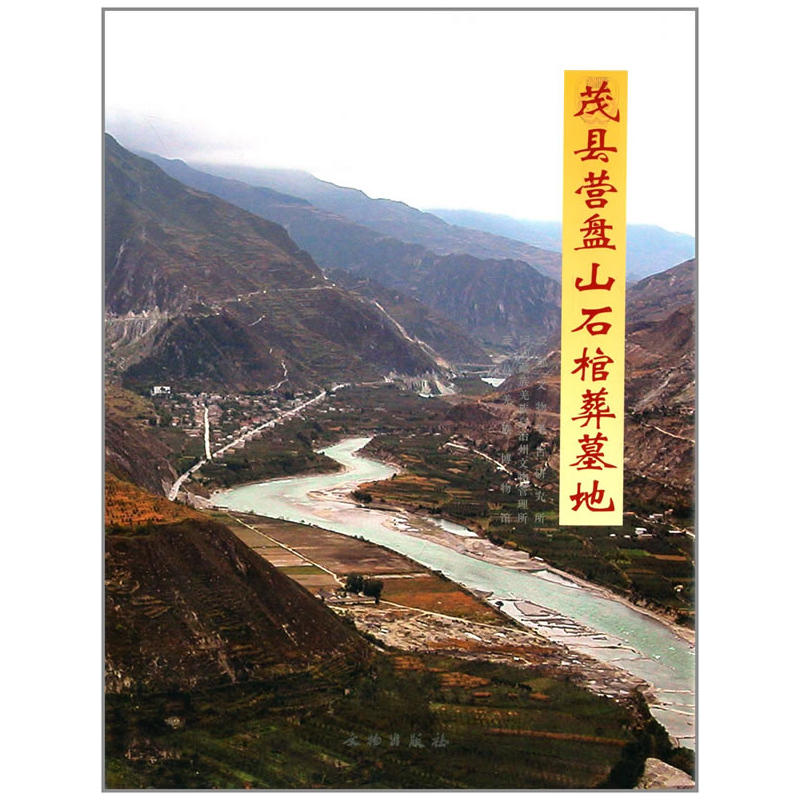
茂县营盘山石棺葬墓地

温馨提示:5折以下图书主要为出版社尾货,大部分为全新(有塑封/无塑封),个别图书品相8-9成新、切口有划线标记、光盘等附件不全详细品相说明>>
- ISBN:9787501037476
- 装帧:一般胶版纸
- 册数:暂无
- 重量:暂无
- 开本:16开
- 页数:447
- 出版时间:2013-07-01
- 条形码:9787501037476 ; 978-7-5010-3747-6
本书特色
from 2000 to 2006, chengdu municipal institute of cultural relics and archaeology and other organizations carried out five excavations at the yingpanshan site, covering an area of nearly 2500 square meters. over 200 stone-coffin tombs and pits with artifacts were excavated. in neat rows, the stone-coffin tombs were dug in the same layer and did not overlapped or disturbed each other. according to the orientation, all the tombs can be roughly divided into two groups. the first group was mainly distributed at the first and forth location, most of which has a direction angel of over150o. the second group was chiefly found at the second and third location, most of which has a direction angle less than 150o. the structure of tombs is relatively uniform, consisting of the stone walls and cover but no bottom board. in some tombs, a stone slab was erected at the head end to form a head nest for placing funerary goods. according to the number of head nest, the tombs are divided into three types. tombs of type i have no head nest and can be classified into three classes: class a with a broad space but less in number, class b with a small space and distribution in group, and class c with relatively abundant funerary objects in separated goods pits. tombs of type ii have one head nest, rich in number but with not many funerary objects. built with processed stone slabs, tombs of typelll have double head nests, a broad tomb space and ample burial goods. the corpses of the tomb occupants were laid in three kinds of way, many of which were arranged in a supine position, with straight limbs and relatively intact skeletons. in the secondary burials, incomplete skeletons were dispersedly placed. some bodies were put face-down and others might have been dismembered before the burial. compared with other cemeteries in the upper reaches of min river, the yingpanshan cemetery owns some special burial customs, such as leaving numerous potteries at the head or foot ends of the stone coffin, or digging an artifact pit near the tomb. many small white stones or huge rocks found in the tomb chamber were deemed to be used for worship or some funerary purpose.
内容简介
From 2000 to 2006, Chengdu Municipal Institute of Cultural Relics and Archaeology and other organizations carried out five excavations at the Yingpanshan Site, covering an area of nearly 2500 square meters. Over 200 stone-coffin tombs and pits with artifacts were excavated. In neat rows, the stone-coffin tombs were dug in the same layer and did not overlapped or disturbed each other. According to the orientation, all the tombs can be roughly divided into two groups. The first group was mainly distributed at the first and forth location, most of which has a direction angel of over150o. The second group was chiefly found at the second and third location, most of which has a direction angle less than 150o. The structure of tombs is relatively uniform, consisting of the stone walls and cover but no bottom board. In some tombs, a stone slab was erected at the head end to form a head nest for placing funerary goods. According to the number of head nest, the tombs are divided into three types. Tombs of Type I have no head nest and can be classified into three classes: Class A with a broad space but less in number, Class B with a small space and distribution in group, and Class C with relatively abundant funerary objects in separated goods pits. Tombs of Type II have one head nest, rich in number but with not many funerary objects. Built with processed stone slabs, Tombs of Typelll have double head nests, a broad tomb space and ample burial goods. The corpses of the tomb occupants were laid in three kinds of way, many of which were arranged in a supine position, with straight limbs and relatively intact skeletons. In the secondary burials, incomplete skeletons were dispersedly placed. Some bodies were put face-down and others might have been dismembered before the burial. Compared with other cemeteries in the upper reaches of Min River, the Yingpanshan cemetery owns some special burial customs, such as leaving numerous potteries at the head or foot ends of the stone coffin, or digging an artifact pit near the tomb. Many small white stones or huge rocks found in the tomb chamber were deemed to be used for worship or some funerary purpose.
目录
**节 概述
一 地理环境
二 历史沿革
第二节 工作概况
一 岷江上游石棺葬发现与发掘历史回顾
二 营盘山石棺葬墓地发掘经过
三 整理编写
第二章 墓葬总述
一 地层介绍
二 墓葬概况
三 遗物概述
第三章 甲类墓
**节 甲a类墓
一 2000m5
二 2000m31
三 2000m34
四 2000m35
五 2000m44
六 2002m3
七 2002m5
八 2002m8
九 2002m11
一○ 2002m14
一一 2002m15
一二 2002m29
一三 2002m40
一四 2003ml
一五 2003m4
一六 2003m5
一七 2003m10
一八 2003m11
一九 2003ml6
二○ 2003m19
二一 2003m28
二二 2004m3
二三 2004m4
二四 2004m6
二五 2004m10
二六 2004m11
二七 2004m15
二八 2004m31
二九 2006m13
第二节 甲b类墓
一 2002m47
二 2004m12
三 2004ml7
四 2004ml8
五 2004m25
六 2004m26
七 2006m9
八 2006m10
九 2006m1l
一○ 2006m12
一一 2006m16
第三节 甲c类墓
一 2000m1
二 2000m2
三 2003m22
四 2003h28
第四章 乙类墓
一 2000m3
……
第五章 丙类墓
第六章 其他墓
第七章 地层出土器物及采集品
第八章 分期与年代
第九章 相关问题的初步认识
附表 茂县营盘山石棺葬登记表
附录
后记
英文提要
作者简介
成都文物考古研究所主要职能是承担成都市地下文物调查、勘探、发掘、研究、保护等工作。现有职工35人,聘用人员40余人,其中具有中高级业务职称的科研人员32人。内设考古发掘研究一部、二部、三部,金沙遗址工作站,文物保护中心,办公室,保卫科,财务科。
-

两张图读懂两宋
¥16.0¥76.0 -

你不知道的古人生活冷知识
¥14.7¥49.0 -

清朝穿越指南
¥14.4¥45.0 -

人类酷刑简史
¥20.1¥59.0 -

万历十五年
¥16.3¥25.0 -

唐潮:唐朝人的家常与流行
¥23.1¥68.0 -

朱元璋传
¥14.0¥39.0 -

从三十项发明阅读世界史
¥11.7¥39.0 -

汉朝其实很有趣
¥9.7¥38.0 -

两晋其实很有趣
¥9.2¥35.0 -

胡同里的姑奶奶
¥27.8¥78.0 -

至道无餘蕴矣:梁漱溟访谈录
¥24.1¥68.0 -

创造圣经的城市
¥19.7¥58.0 -

中国近代史
¥6.0¥20.0 -

告别与新生-大师们的非常抉择
¥16.0¥45.8 -

明朝那些事儿大结局 第七部
¥8.9¥29.8 -

硬核原始人
¥21.0¥65.0 -

中国通史
¥18.5¥45.0 -

谁是剽窃者:牛顿与莱布尼茨的微积分战争
¥15.8¥45.0 -

中国庭园记
¥13.5¥26.0











